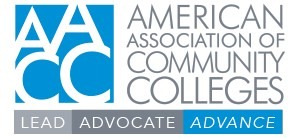FOR IMMEDIATE RELEASE
March 30, 2018
Contact: Martha Parham
202/728-0200, x209
mparham@aacc.nche.edu
EDITORIAL
What are community colleges? Are they vocational schools?
While community colleges are no stranger to the national spotlight, recent attention has brought with it questions about the very definition of a community college. A uniquely American concept, community colleges were started as a way to train women to enter the workforce as teachers. You could say that early community colleges were the first vocational schools.
Today’s community colleges are as diverse as the students they serve. More than 1,100 community colleges across the nation serve more than 12-million students annually. By design, community colleges are local and reflect the needs of the community in which they reside. Nearly every congressional district in the United States has a community college. The students that attend are the most diverse within the higher education sector and many are the first in their family to attend college. Community college students on average are older, are working, are attending school part-time, and are saving thousands of dollars in tuition and fees while increasing their lifetime earning potential and employability.
Traditional and cutting-edge, community colleges represent the best of American higher education. They are unapologetically accessible and provide a critical pathway for students to reach their educational goals. For many students, that means they complete their first two years of college without a mountain of debt, with a solid foundation taught by many of the same professors that teach students in the university setting, and with a guaranteed transfer to a university. For the community college, they do this with less money and far less alumni support than their university counterparts.
The beauty of the community college is its ability to evolve in support of its community. As the country and world evolved, so did the needs of its citizens. Many vocational programs that were traditionally taught in high schools some 40 years ago, are now taught at community colleges. These programs offer sophisticated, relevant, and accredited workforce education.
“Vocational schools” are now generally called career and technical education or workforce development programs and are structured to develop needed skills for the diverse, modern workforce. The necessity of the evolution of these programs was dictated by the advancement of technology. Classes that were offered in support of learning the skills to be an automotive technician in the 1980s would certainly be lacking in today’s technologically advanced vehicles that are largely run by computers. The technology evolved. So did the education.
Like the thousands of general education programs offered at community colleges, these career and technical programs are a good investment for the community. Many of these programs are a partnership between industry and the community college and are designed to address the regional economic needs of employers and employees. These partnerships go beyond vocational training and instead are designed to create a pipeline that serves the community and its citizens with a viable job market.
The first choice for many students, community colleges have been the start of amazing things for millions of Americans. So, is a community college a vocational school? Yes. And many other things. To the nurses, firefighters, police officers, dental hygienists, chefs, fashion designers, business owners, transfer students, welders, plumbers, marine biologists, and the many millions of community college students served in the past century, we remain committed to evolving and supporting your success in achieving your educational goals – no matter what you call us.
Walter G. Bumphus, Ph.D.
President and CEO
###
As the voice of the nation’s community colleges, the American Association of Community Colleges (AACC), delivers educational and economic opportunity for 12 million diverse students in search of the American Dream. Uniquely dedicated to access and success for all students, AACC’s nearly 1,200 member colleges provide an on-ramp to degree attainment, skilled careers and family-supporting wages. Located in Washington, D.C., AACC advocates for these not-for-profit, public-serving institutions to ensure they have the resources and support they need to deliver on the mission of increasing economic mobility for all.
